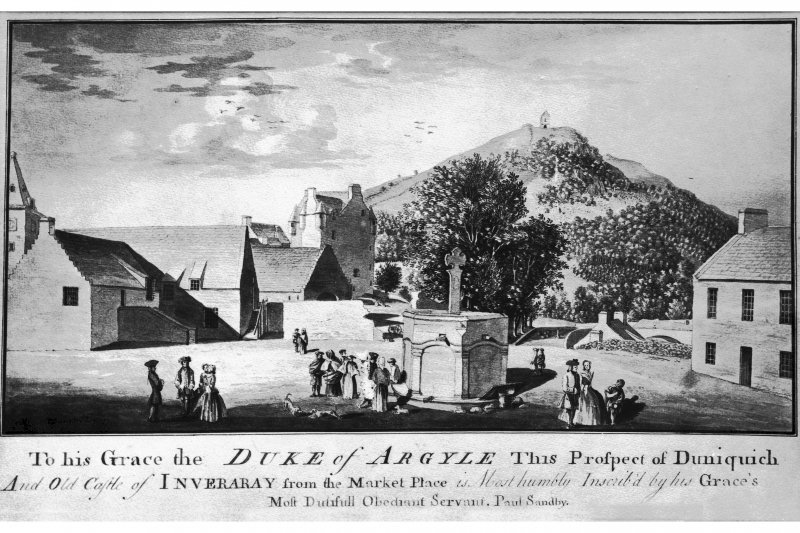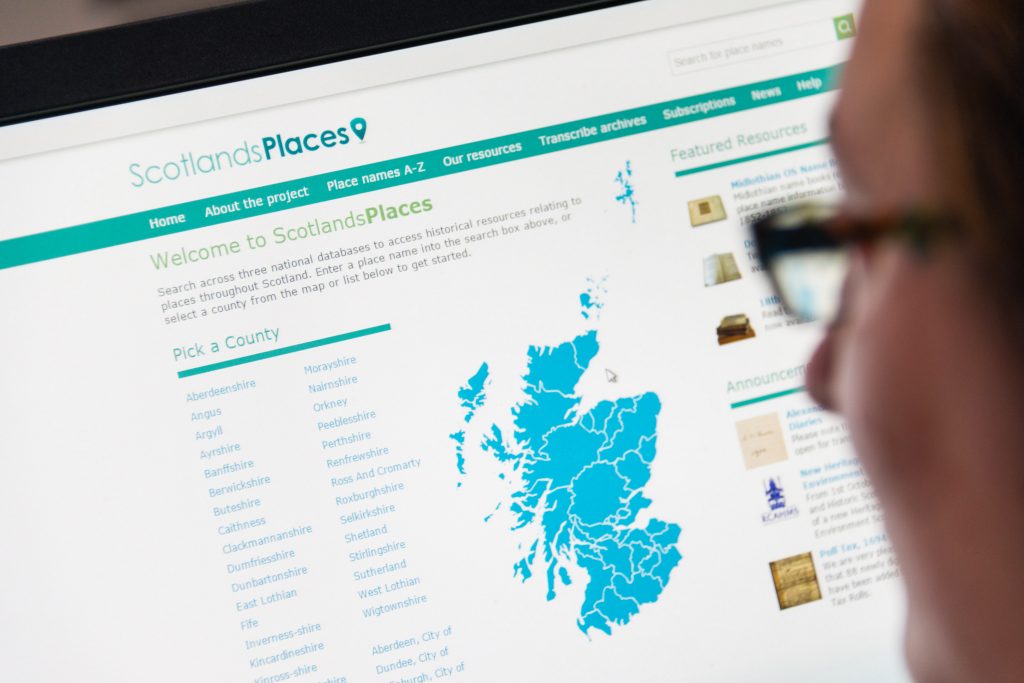Did you know that pet dogs used to be taxed? In 1797-1798 people who owned dogs that didn’t work were expected to pay a tax of five shillings on each dog. We know that the Duke of Argyll was a dog lover and owned twelve dogs, paying £3 duty on them (more than £100 in today’s money).
How do we know all this? We found it on ScotlandsPlaces.
What is ScotlandsPlaces?
ScotlandsPlaces is a website that gives you access to records (like the one about the Duke’s dogs) from Historic Environment Scotland, the National Records of Scotland and the National Library of Scotland. All of the records are linked by a common theme – they tell us something about Scotland’s places. Of course, in telling us about Scotland’s places we also learn about Scotland’s people, making it a great resource for family history, local history as well as many other kinds of research.
What else can I find out about?
Let’s stay with the Duke of Argyll and see what else the records say about him. As well as keeping dogs he also owned four private carriages, 18 horses, 9 clocks and a gold watch! Interestingly the same record shows that his servants, like Ann Robinson, owned ‘silver or metal watches’, suggesting that they were well remunerated for their work.

Report Survey Dog Tax Argyllshire for the Year ending 5 April 1798 By Peter Campbell Surveyor 13. Crown copyright NRS
The Servant Tax Rolls tell us that the Duke had a large household of servants; he employed thirteen women and fourteen men. They did a variety of jobs from housekeeper (Ann Robinson) to gardener (Joseph Turnbull), butler (Alexander Marquis) to cook (Alice Meller) and coachman (John Burt) to groom of the chamber (William Christie).
Where did he live?
The Duke of Argyll lived in Inveraray Castle. During the eighteenth century, just before the particular Duke of Argyll we have been looking at became Duke, the old castle was torn down and a new one put in its place. The new building is fairly spectacular, as images from the site show. In fact, you may recognise the building from a Christmas episode of Downton Abbey.

Titled: ‘To his Grace the Duke of Argyle This Prospect of Duniquich And Old Castle of Inveraray from the Market Place is most humbly Inscribed by his Grace’s Most Dutiful Obedient Servant. Paul Sandby’.
The Ordnance Survey Name Books was a record that was taken in the nineteenth century where officials travelled around the country gathering information about place names. They are an excellent resource to understand an area and describe the castle as, “A beautifully finished building almost square three stories in height, a tower at each corner, and a pavillion in the centre.”
Can I find out about my local history?
We have images and records from all over Scotland, so it’s very likely that you will be able to find out something about where you grew up, where you live now or even where your ancestors used to live. There could be photos, maps or a written description – simply type in a parish, town or street and see what comes up!

How can I get involved?
ScotlandsPlaces is open to everyone to search and find their history. The transcribed records make searching much easier, as it means the computer can search the text. Currently not all of our records are transcribed and we rely on volunteers to help open up Scotland’s history to more people by transcribing for us. You don’t need to have experience and could gain some fantastic skills in reading old handwriting and working with a computer. We currently have over 3,000 transcribers who have so far worked on 152,609 pages! Get in touch if you want to get involved.
![]()
ScotlandsPlaces can be accessed at http://www.scotlandsplaces.gov.uk/. Follow us on Twitter @scotlandsplaces and like our Facebook page for highlights from the site. For any enquiries please email enquiries@scotlandsplaces.gov.uk.


